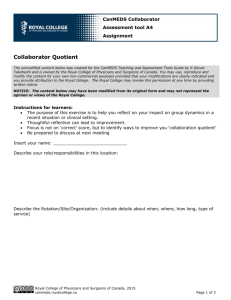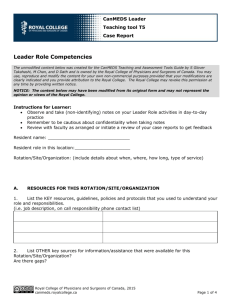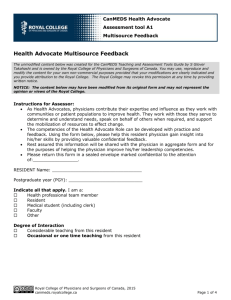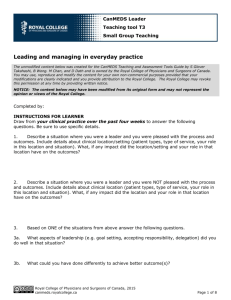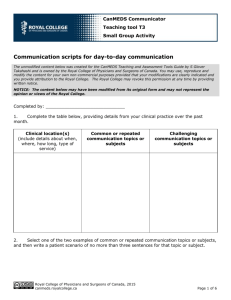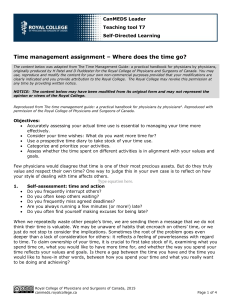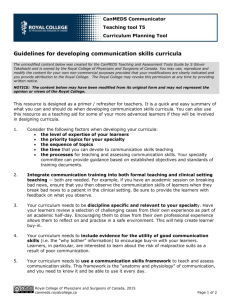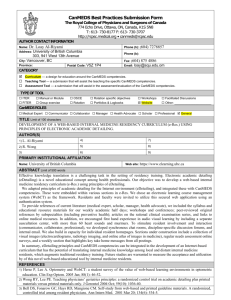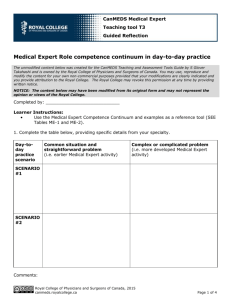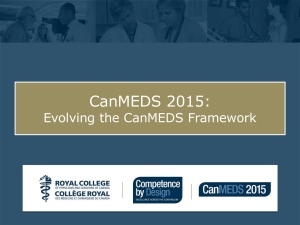MS Word
advertisement
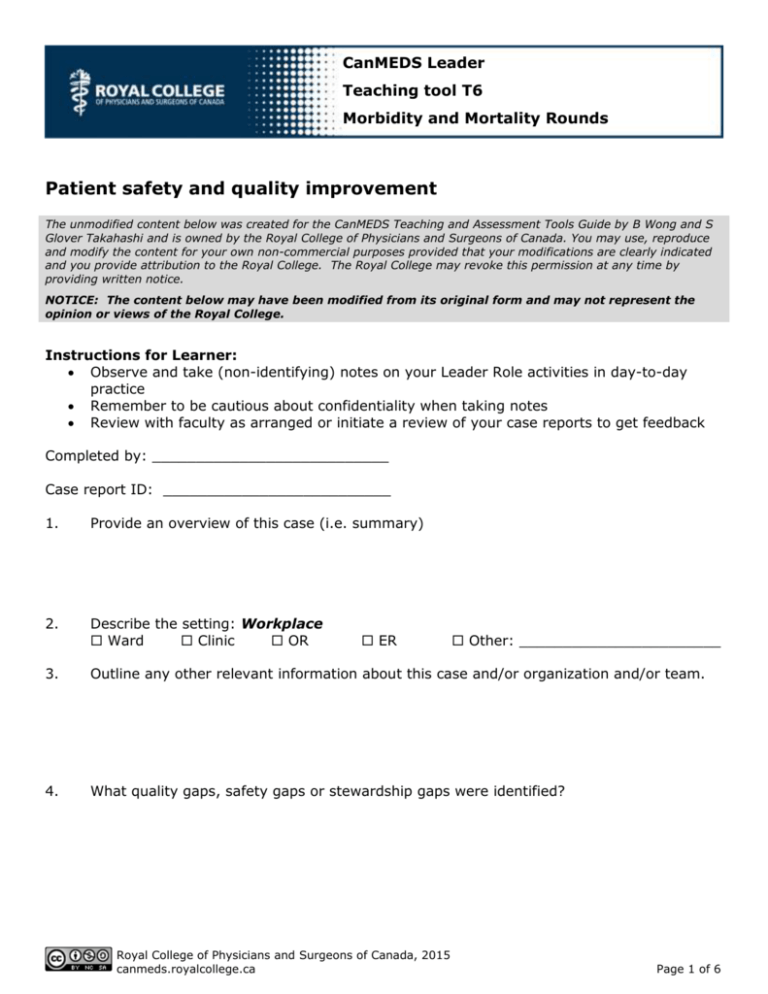
CanMEDS Leader Teaching tool T6 Morbidity and Mortality Rounds Patient safety and quality improvement The unmodified content below was created for the CanMEDS Teaching and Assessment Tools Guide by B Wong and S Glover Takahashi and is owned by the Royal College of Physicians and Surgeons of Canada. You may use, reproduce and modify the content for your own non-commercial purposes provided that your modifications are clearly indicated and you provide attribution to the Royal College. The Royal College may revoke this permission at any time by providing written notice. NOTICE: The content below may have been modified from its original form and may not represent the opinion or views of the Royal College. Instructions for Learner: Observe and take (non-identifying) notes on your Leader Role activities in day-to-day practice Remember to be cautious about confidentiality when taking notes Review with faculty as arranged or initiate a review of your case reports to get feedback Completed by: ___________________________ Case report ID: __________________________ 1. Provide an overview of this case (i.e. summary) 2. Describe the setting: Workplace Ward Clinic OR 3. Outline any other relevant information about this case and/or organization and/or team. 4. What quality gaps, safety gaps or stewardship gaps were identified? ER Royal College of Physicians and Surgeons of Canada, 2015 canmeds.royalcollege.ca Other: _______________________ Page 1 of 6 CanMEDS Teaching and Assessment Tools Guide Leader teaching tool T6 5. What were the contributing factors to the safety, quality, or stewardship problem? 6. What could be done to improve things? 7. What was the patient and family’s perspective? 8. What did you learn from this that you will take into your future practice? 9. What is KNOWN (in literature) about this problem? Possible solutions? 10. How did this case affect you personally? 11. What are the TOP two or three ‘take home points’ from this case? Royal College of Physicians and Surgeons of Canada, 2015 canmeds.royalcollege.ca Page 2 of 6 CanMEDS Teaching and Assessment Tools Guide 12. What can be done? a. What can you do? b. What can others do? 13. Planning for improvement # Top areas for Who is responsible for improvement identified in improvements? this case Leader teaching tool T6 What can be done? 1. 2. 3. Other notes/reflections: Royal College of Physicians and Surgeons of Canada, 2015 canmeds.royalcollege.ca Page 3 of 6 CanMEDS Teaching and Assessment Tools Guide Leader teaching tool T6 Patient safety applies to this situation Patient safety does not apply to this situation Patient Safety IN THIS SITUATION Rating Not Done done Not Comments applic able Areas or ideas for improvement? I recognized the patient safety incident, and was able to classify it as: 1) A harmful incident results in harm to the patient, Harm occurred due to medical care as opposed to underlying medical condition. 2) A no harm incident reaches a patient but does not result in any discernible harm, 3) A near miss does not reach the patient I contributed to a safety culture including demonstrating commitment to openness, honesty, fairness, and accountability. Include examples of how. I reported the incident(s) and safety hazard(s) and/or notified my supervisor. Include who, how and when. I met the immediate and ongoing care needs of the patient, limited further harm, and provided ongoing monitoring and care. Royal College of Physicians and Surgeons of Canada, 2015 canmeds.royalcollege.ca Page 4 of 6 CanMEDS Teaching and Assessment Tools Guide Patient Safety IN THIS SITUATION Leader teaching tool T6 Rating Not Done done Not Comments applic able Areas or ideas for improvement? I explained to the patient what unexpected event or change happened. Include who, how and when. I apologized that it happened. Include who, how and when. I explained what would happen next including explicitly discussing prevention with future patients. Include who, how and when. I/we analyzed the patient safety incident(s) to enhance systems of care. Include who, how and when. I/we planned a debriefing to manage the emotional impact. Include who, how and when. OTHER: Other notes/reflections: 5. Summarize your TOP two or three areas of strength? Royal College of Physicians and Surgeons of Canada, 2015 canmeds.royalcollege.ca Page 5 of 6 CanMEDS Teaching and Assessment Tools Guide 6. # Leader teaching tool T6 Planning for improvement Summarize your TOP two or three personal areas for improvement over the next four to eight weeks? How are you going to work on your personal improvement priorities over the next four to eight weeks? How will you know that you have achieved the needed improvement in your personal priority areas? 1. 2. 3. Royal College of Physicians and Surgeons of Canada, 2015 canmeds.royalcollege.ca Page 6 of 6
